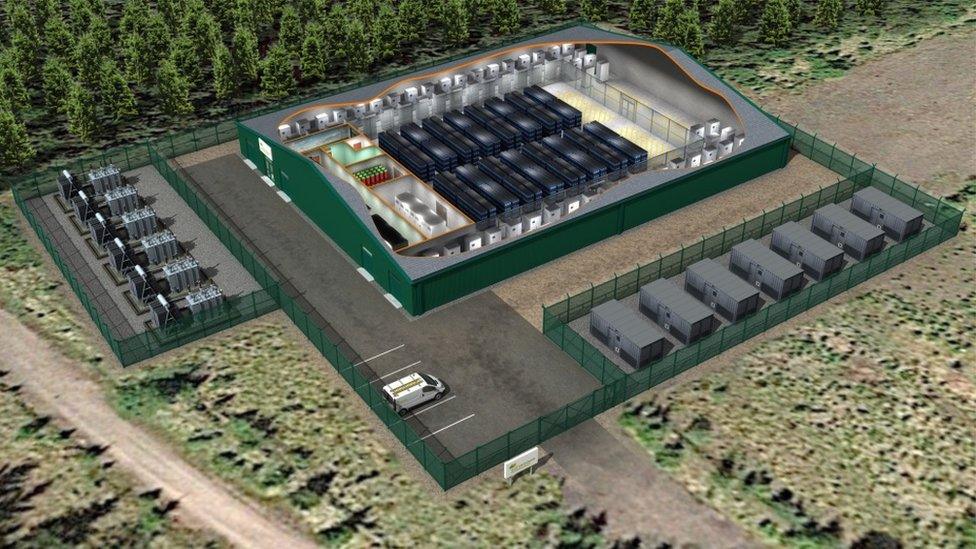Facing Charges: What's your renewable tipping point?
- Published
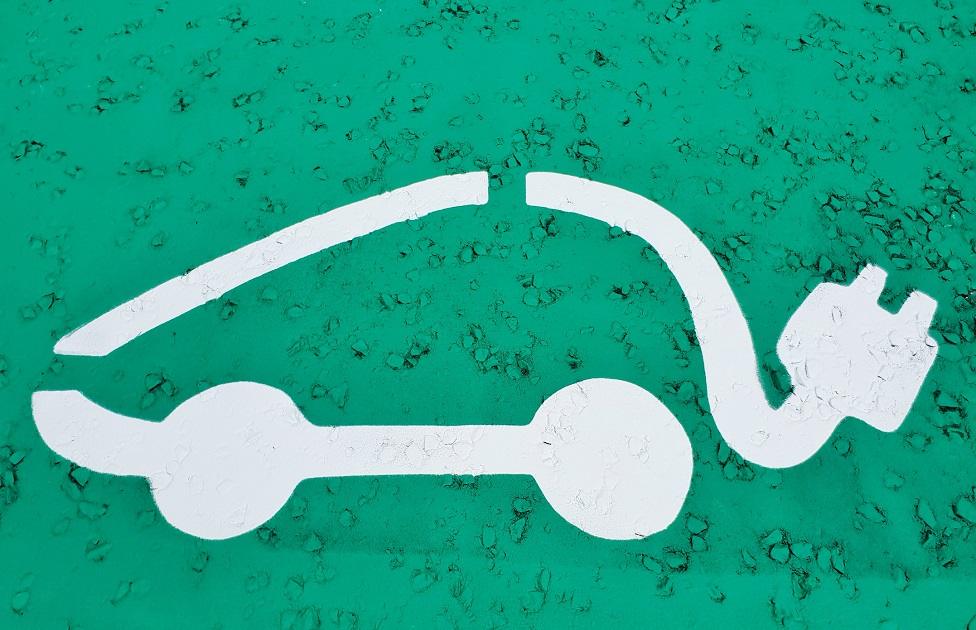
Falling prices are driving rapid change in the way we see and use renewable energy
The humble battery is emerging as a financially viable pivot around which much of the new energy sources can work
Prices have plummeted and density has soared, meaning battery back-up can compete with more conventional sources of power
New developments include giant industrial battery parks as well as home cells, letting householders automatically sell power into the grid as prices rise
The future is being driven by dropping prices. That's nothing new. It's when innovative products drop in price, moving from the elite to reach a mass market, that they become transformative. Think cars, mobile phones, personal computers and air travel.
It's true also of the tipping point where one technology replaces another. And that's what we're currently seeing with renewable energy.
Subsidy was used to help onshore wind farms develop. They are now commercially viable, and only seek a floor price through the subsidy auction in case the price drops.
Offshore wind may eventually go that way, its price driven south by the downward pressure of government auctioning the right to supply the grid at a floor price. Slow to start, the efficiencies have accelerated.
A danger to wind is that solar keeps plummeting in price. I'm told that, even at the efficiency level you can get out a solar panel in Scotland, they're now so cheap that they're becoming commercially viable.
That's on open land, at least. It's becoming a viable crop for farmers. The cost of putting them on your roof is still a sizeable financial hurdle. And it's a technology that could eventually be overtaken by the arrival of photo-voltaic tiles, replacing the entire roof.
Inconvenience
According to Professor Keith Bell, an energy systems expert at Strathclyde University, electric vehicles, or EVs, have to hit three tipping points, and they may be coming sooner than you'd think.
One is on cost - when the high capital and lower running costs of an EV undercut the lower upfront and higher fuel costs of an ICE (internal combustion engine).
The second is to counter range anxiety. Car batteries have to offer a longer range, to reassure owners they won't get stuck on a long journey with a powerless car. And allied to that, there has to be the charging infrastructure to reassure them that they won't be too far from a top up. That's obviously of particular interest in rural areas.
The professor credits one of his students with the third tipping point, that of inconvenience. It's the point at which the notional 'cost' of finding a charging point, finding it available, plugging in, the time spent waiting, minus the activities to keep you busy while it charges, fall below the alternative "cost" of refuelling at a conventional petrol station.
That sounds a daunting hurdle, particularly for the 43% of British households without off-street parking. For them, the shift to EVs is more likely to be driven by "destination charging" - going to a supermarket or workplace to charge, where drivers can find something to keep them busy.
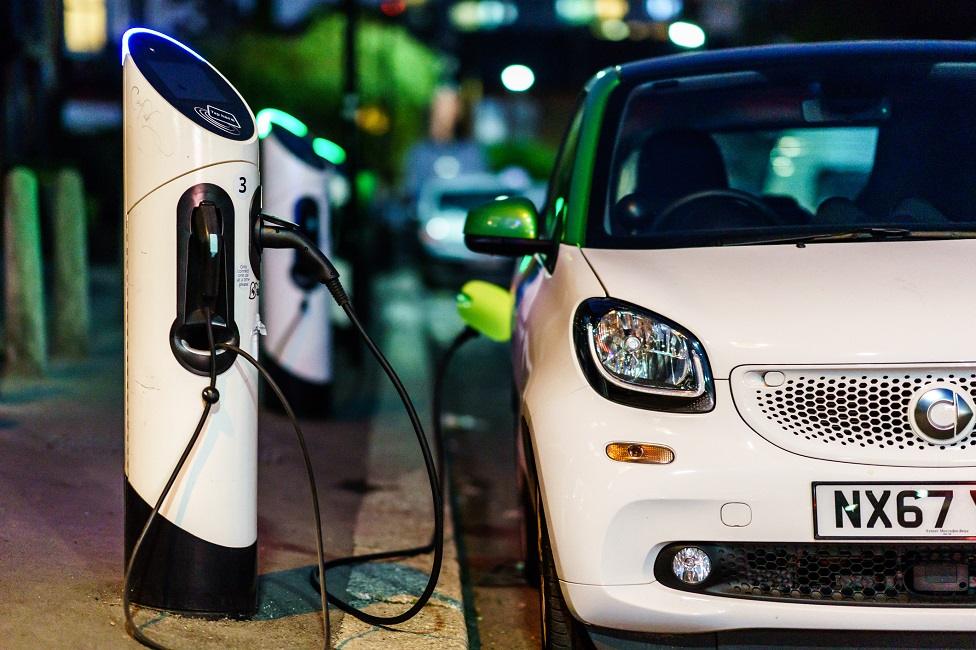
The energy industry believes the inconvenience factor won't prove as big a problem as it now seems, and that people will adapt. Keith Bell cites research into charging habits for EVs in London.
It was expected owners would plug in overnight every night. They soon realised there was no need to, perhaps using their cars less than they realised. So typically, they adapted, to charge on a Sunday and top up on Wednesday night.
EV technology is less given to taking a tank from empty to full, but instead topping up, more often and for brief periods. In any case, batteries can be recharged 10 times as often if they are not repeatedly filled and then emptied. Better to keep them between 10% and 90%.
So when will the EV tipping point be reached? The intention is to take petrol and diesel cars and vans off the road within 13 years in Scotland and within 21 years for the UK. Yet those looking at the trajectory of price and ownership think it might happen long before that - perhaps within three years.
One of their concerns is that the speed of the transition may create a new problem of EV exclusion, where those who live in poorer areas lack the charging infrastructure as well as the upfront funds to buy electric. They could be left behind, with ever more expensive petrol and diesel.
Draining power
With colleagues, I've been looking in detail at these issues over recent weeks, to see the implications of the transition to net zero greenhouse gases within 26 years in Scotland. The UK aims to get there within 31 years.
And one factor that has kept cropping up is that a pivotal technology for all this is the humble battery. I took a special look at it on Saturday's Good Morning Scotland radio programme.
It's not so humble these days. It's making big inroads at both an industrial and a domestic scale.
Research into powering EVs, backed by billions from the world's big auto manufacturers, has driven down density - that is, the scale of charge and the speed of discharge that can be achieved per kilogram of battery weight.
At a much smaller scale, mobile phone manufacturers have been trying to cut size and weight as well, but struggling to keep up with the draining power of the ever-growing range of functions and apps they load onto their phone platforms.
There has also been a sharp drop in price, driven by competition and the scale at which batteries are now being manufactured, mostly in Asia.
Monster
That has made batteries a more financially attractive proposition to back up the intermittent power coming from wind and solar power. One part of the energy future is large battery parks, located close to distribution networks.
One such park opened last year in Broxburn, West Lothian. RES, the renewables business that spun out of the McAlpine construction firm, has two others in north-east England and one in Germany. The British ones have 80MW between them, out of 300MW of installed capacity in the GB energy market so far.
The rating means they can carry that maximum charge and discharge it within an hour. They can also do half that wattage in twice the time.
But as I found out by visiting the RES control centre, located in the floor above STV's newsroom on the banks of the Clyde (it was attracted by the broadcaster's superior cabling and old-fashioned back up generator), these monster batteries are more often used to even out fluctuations on the grid, when the wind drops or when demand surges.
They are among the providers paid by the National Grid to provide back-up power when other forms of power fall short of demand. Such an occasion arose on 9 August, when two major power sources cut out. It meant big industrial users of power had to shut down, including trains around north London.
In the interim report into what went wrong, published by Ofgem this week, Professor Bell noticed that 75% of the so-called Enhanced Frequency Response - big batteries to most of us - kicked in. He's looking forward to learning what happened to the other 25%.
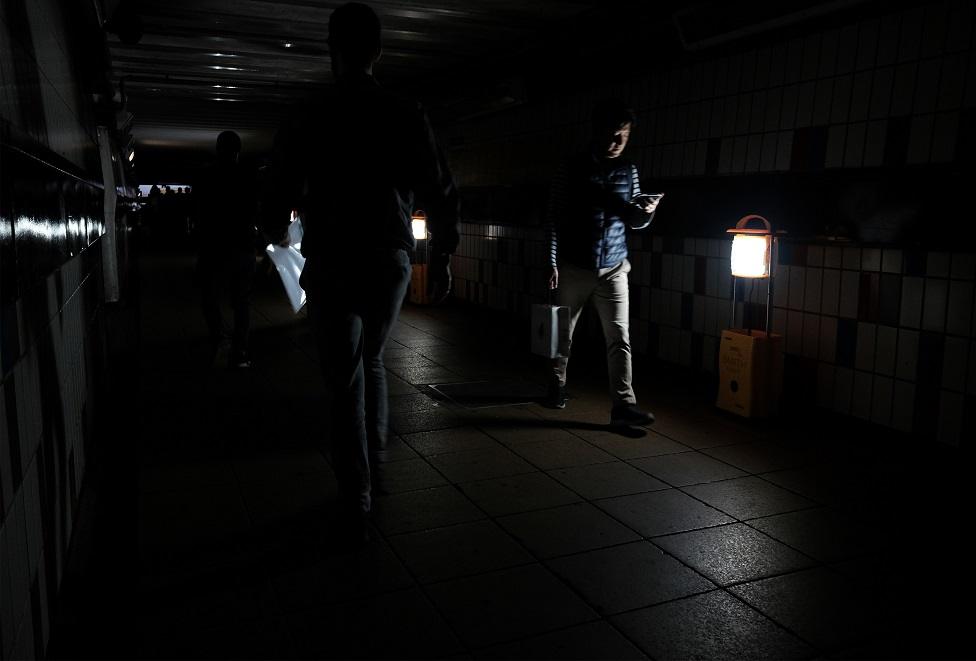
Temporary lighting was set up as a power cut affected Clapham Junction train station in London
Hydro pump storage has long been the go-to source of quick response when power is needed, on stand-by to respond within 15 seconds. Scotland has a few such mountain stations, including Cruachan and Foyers. But even where the geography makes it viable, such projects have colossal capital costs.
Gas is seen as another back-up, though it takes time to fire up, and continues to pollute with greenhouse gases.
Batteries, meanwhile, can deliver in less than a second, they are becoming cheaper than gas, and they can be located unobtrusively in many different places.
So Scottish Power is one of the companies starting to invest heavily. Lindsay McQuade, chief executive of SP Renewables, told me about the plans to build a 50 MegaWatt battery park on the vast Whitelee wind farm south of Glasgow.
Once complete, it should be roughly the size of a mid-size supermarket, she says - a big shed with racks and racks of battery units. Other units are expected at other wind farms, to store excess power at quiet times, and feed it back in to the system during the day, as consumer demand goes up along with wholesale prices.
It is, put simply, a classic 'buy cheap and sell expensive' investment opportunity.
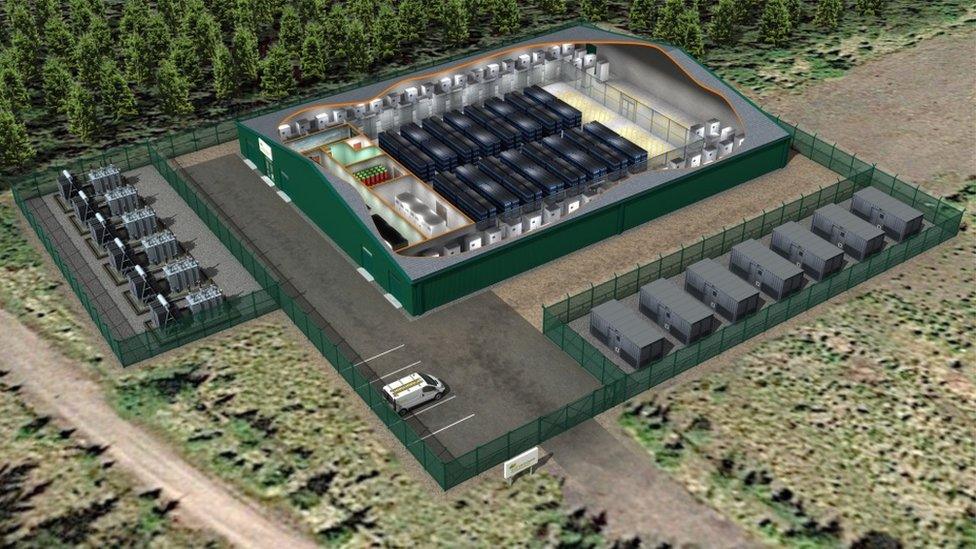
The battery park is planned for the Whitelee wind farm, south of Glasgow
Household bills are also likely to fluctuate with the changes ahead, and as prices fluctuate through the day. The residential battery market is another of those Next Big Things.
This is typically attached to solar panels, storing for discharge after the sun goes down and electricity demand goes up - particularly in countries where homes are largely heated by electricity. In the transition for British homes, the shift to electric heating is one way in which we are likely to become more like the continental cousins.
Germany got into this early, first with subsidies for rooftop solar, and six years ago, with subsidy for 'solar plus' installation. That ties together rooftop panels with batteries, to be found in cupboards or garages. The size of these has dropped from that of a fridge to a suitcase to a large laptop.
In a manufacturing nation, it's a very effective way of supporting factories that make such kit, and of helping new technologies develop ahead of other countries.
At energy consultancy Wood Mackenzie, Rory McCarthy says that European residential battery installation is set to soar in the next five years. Worldwide, including China, Korea and Australia, it looks like 13-fold growth of installed capacity.
He says prices have dropped 80% since 2010. The pace of declining prices continues. The last two years have seen a 45% decline.
Bag of coal
Britain is not at the forefront of this, partly because its residential electricity prices are relatively low. Germany's are more than 50% higher per unit. That tipping point, at which people invest in new technology, is reached much faster where the default prices are higher.
Rory McCarthy adds that Whitehall policy is not helping with the transition, and nor does it make much sense. Solar and solar-plus subsidy was sharply withdrawn when it attracted too many takers.
The kit can be bought with 5% VAT - the rate for domestic energy. That's until October, when it goes up to 20%. Yet, the WoodMac analyst points out, you'll continue to pay 5% VAT on a bag of coal.
The way this fits into our domestic energy future is as a means for flexing and levelling out demand - at household level, plugged into the car in the driveway, as well as the district power and heating systems that will become more common. This involves a two-way street of buying off the grid and supplying excess household-generated energy into it.
Balancing out that much more complex system will require clever collection and use of data. Smart meters will have to manage much of that, for the householder and for the energy supplier. For now, industry standards on meters remain uncertain and a significant obstacle to progress.
But the drive towards this technology seems to have developed a habit of taking us by surprise in the speed at which change can happen.
Congo colbalt
Two final thoughts on batteries. One: the most efficient ones so far developed require raw materials - notably lithium, manganese and cobalt.
Lithium comes from, among other places, the Australian outback. Supply chains are well established, and secure.
The supply of cobalt is not. Last year, 72% of it came from the Democratic Republic of Congo. That's up from 65% the previous year. With civil war and unsafe mining practices, that raises a big ethical question on sourcing. The industry's response is to pour more funds into researching a way out of such dependence on it.
The other point: disposal or recycling. The current generation of batteries are reckoned to have 10 to 20 years of efficient life ahead of them.
Disposing of them is not easy. The existing plan for the power industry is to hand them on to others who don't need the same high spec.
So as buildings rely more on their own battery back-up, an office block or care home, for instance, might be handed an industrial quantity of battery packs, which aren't capable of delivering the same sub-second response required for the grid. That, however, only passes on the disposal and recycling problem. It doesn't get rid of it.
- Published16 August 2019
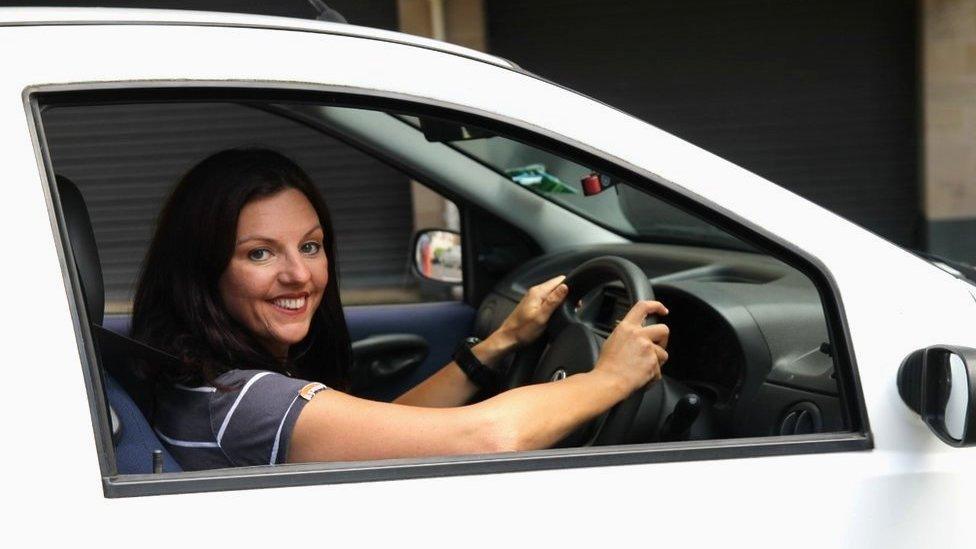
- Published16 August 2019

- Published10 August 2019
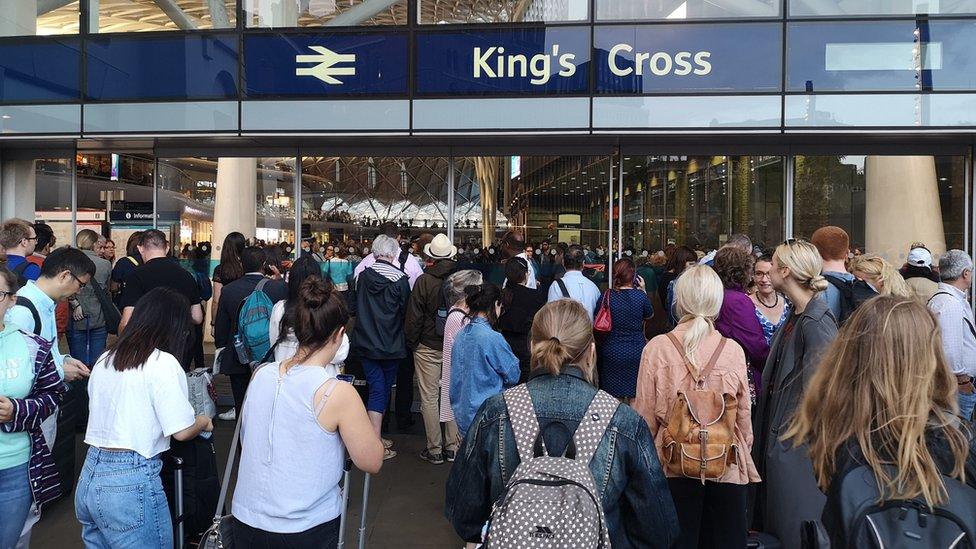
- Published20 August 2019

- Published10 June 2019
